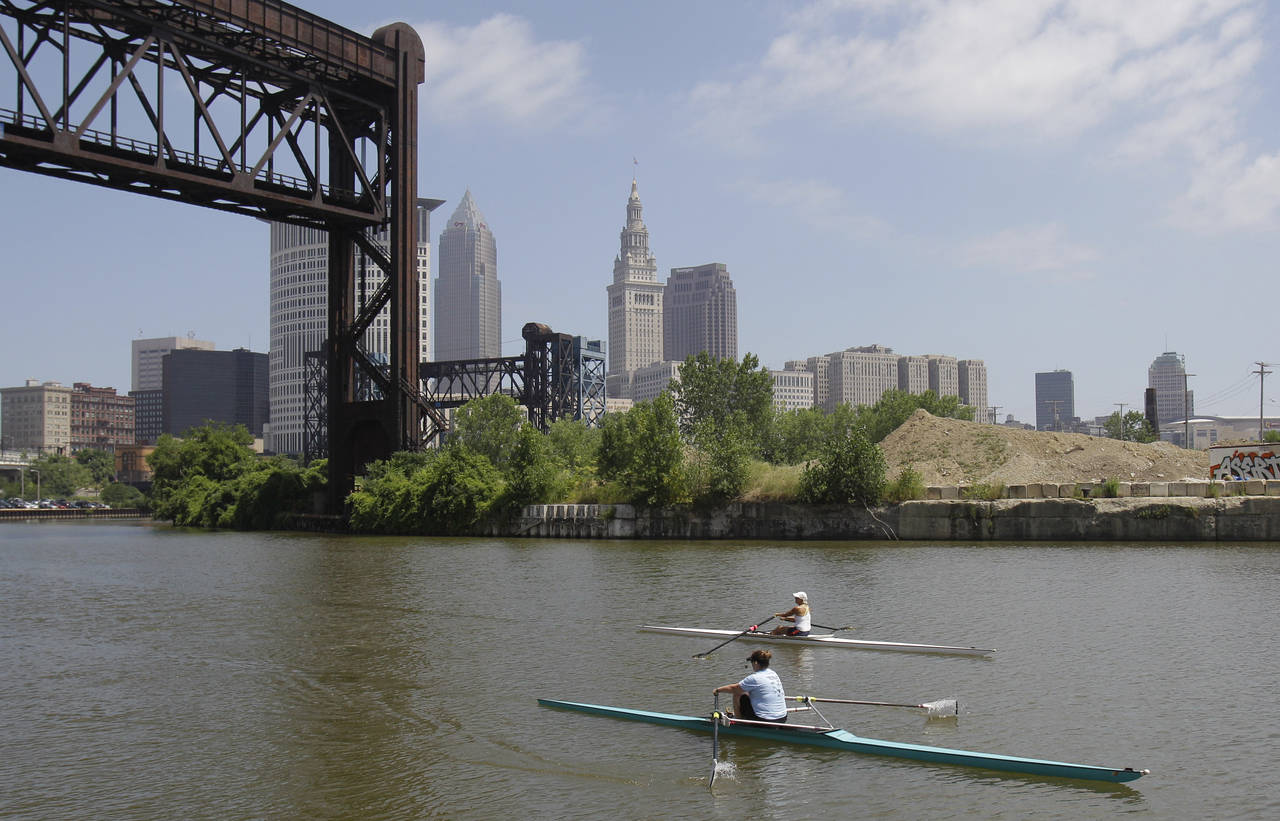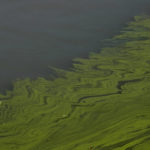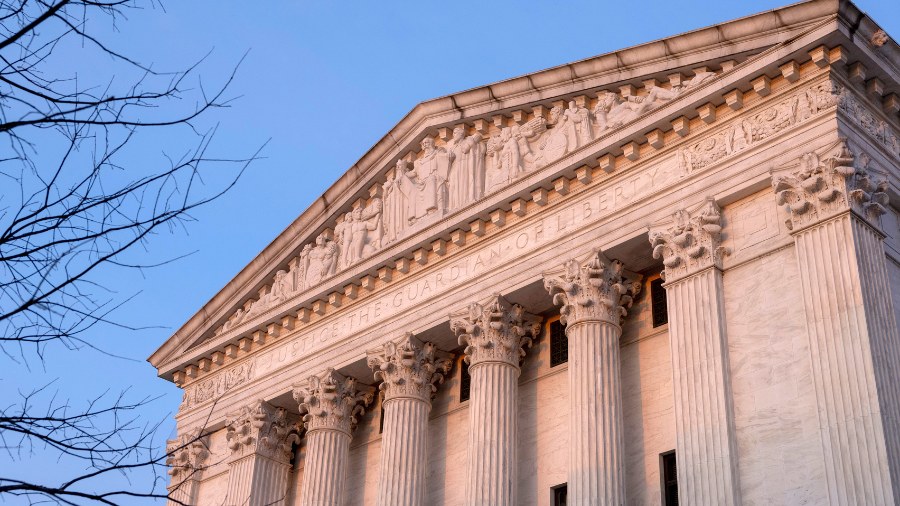Clean Water Act at 50: environmental gains, challenges unmet
Oct 16, 2022, 8:06 PM | Updated: Oct 17, 2022, 8:12 am

FILE – Two rowers paddle along the Cuyahoga River in Cleveland on July 12, 2011. Tuesday, Oct. 18, 2022, is the 50th anniversary of Congress passing the Clean Water Act to protect U.S. waterways from abuses like the oily industrial pollution that caused Ohio's Cuyahoga River to catch on fire in 1969. (AP Photo/Tony Dejak, File)
(AP Photo/Tony Dejak, File)
Lifelong Cleveland resident Steve Gove recalls when the Cuyahoga River symbolized shame — fetid, lifeless, notorious for catching fire when sparks from overhead rail cars ignited the oil-slicked surface.
“It was pretty grungy,” said the 73-year-old, an avid canoeist in his youth who sometimes braved the filthy stretch through the steelmaking city. “When you went under those bridges where the trains were hauling coke from the blast furnaces, you had to watch for cinders and debris falling off.”
It wasn’t the only polluted U.S. river. But outrage over a 1969 Cuyahoga fire — the latest in a series of environmental disasters including a 3-million-gallon oil spill off California’s Santa Barbara months earlier — is widely credited with inspiring the Clean Water Act of 1972.
As officials and community leaders prepared to celebrate the law’s 50th anniversary Tuesday near the river mouth at Lake Erie, the Cuyahoga again is emblematic. This time, it represents progress toward restoring abused waterways — and challenges that remain after the act’s crackdown on industrial and municipal sewage discharges and years of cleanup work.
A 1967 survey found not a single fish in the river between Akron and Cleveland. Now, there are more than 70 species including smallmouth bass, northern pike and muskellunge. Limits on eating them have been lifted. The Cuyahoga is popular with boaters. Parks and restaurants line its banks.
“I have folks come into my office routinely from other states and around the world, wanting to see the Cuyahoga River,” said Kurt Princic, a district chief for the Ohio Environmental Protection Agency. “They want to know how we got from where it was in the ’60s to where it is today. It starts with the Clean Water Act, partnerships and hard work.”
Yet the river remains on a U.S.-Canada list of degraded “hot spots” in the Great Lakes region; it’s plagued by erosion, historic contamination, storm water runoff and sewage overflows. Toxic algae blooms appear on Lake Erie in summer, caused primarily by farm fertilizer and manure.
HALF EMPTY, HALF FULL
The Clean Water Act established ambitious goals: making the nation’s waters “fishable and swimmable” and restoring their “chemical, physical and biological integrity.” It gave the newly established U.S. Environmental Protection Agency broad authority to set and enforce regulations.
“We’ve made tremendous progress,” EPA Administrator Michael Regan said in an Associated Press interview Friday. “By passing the Clean Water Act, Congress solidified the importance of protecting our lakes, rivers and streams for generations to come.”
Experts and activists agree many waterways are healthier than they were, and cleanups continue. The Biden administration’s 2021 infrastructure package includes $50 billion to upgrade drinking water and wastewater treatment systems, replace lead pipes and cleanse drinking water of toxic PFAS, known as “forever chemicals.”
But the law’s aims have been only “halfway met,” said Oday Salim, director of the University of Michigan’s Environmental Law and Sustainability Clinic. “If you spoke to most clean water policy advocates today, they’d be pretty disappointed in how long it has taken to get halfway.”
The measure’s crowning achievement, Salim said, is a program that requires polluting industries and sewage treatment plans to get permits limiting their releases into waters. EPA also set pollution standards for 50 industries.
Yet the agency is far behind on strengthening those requirements to reflect pollution control technology improvements, said Eric Schaeffer, a former EPA enforcement chief and executive director of the Environmental Integrity Project, which has sued the agency over the delays.
Two-thirds of the requirements haven’t been updated in more than 30 years, the group said in a March report that blamed the outdated ones for “more pollution from oil refineries, chemical plants, slaughterhouses and other industries pouring into waterways.” Pollution control plans for large watersheds and regulatory enforcement are weak, it said, while EPA and state environmental agencies have endured repeated budget cuts.
One result, Schaeffer said, is that more than 50% of lake, river and stream miles periodically assessed are still classified as impaired.
Regan acknowledged EPA has “some more work to do” but had an “aggressive agenda to curtail pollution and upgrade standards and enforcement policies at a pace that science allows us to do.”
“We can’t ignore that the previous administration did not take action,” he said. “We also can’t ignore that we have the same staffing levels that we had in the late ’80s. I think we’re doing a really good job of beginning to make up for lost time.”
RUNOFF LEFT OUT
The Clean Water Act prompted many states to prohibit laundry detergents containing phosphorus. Some had labeled Lake Erie “dead” as the soaps fueled algae blooms that sapped oxygen and killed fish.
The bans caused a turnaround in the 1980s. Erie was blue once more instead of brown.
Yet the algae blooms were back within a couple of decades — this time because of a problem the Clean Water Act had sidestepped.
Its emission limits and permitting requirements apply to wastes released into waters through pipes or ditches from identifiable sources, such as factories. But it doesn’t regulate runoff pollution from indirect sources — fertilizers and pesticides from farm fields and lawns; oil and toxic chemicals from city streets and parking lots — that flow into waterways when it rains.
Such runoff pollution is now the leading cause of U.S. waterway impairments.
Scientific studies say manure and fertilizer from livestock operations spread on crop fields are largely to blame for sprawling summer algae in western Lake Erie and the “dead zone” in the Gulf of Mexico, which receives massive heartland runoff from the Mississippi River. They’re also the top pollutant in Chesapeake Bay.
Environmental groups who have long argued the law allows regulation of large livestock farm pollution sued EPA this month, demanding a tougher approach. But federal and state agencies rely mostly on voluntary programs that provide financial assistance to farms for using practices such as planting cover crops that hold soil during off-seasons and buffer strips between croplands and streams. Farm groups resist making such practices mandatory.
“Agriculture politics are the third rail,” said the Environmental Integrity Project’s Schaeffer. “The farm lobby is powerful.”
Stan Meiburg, director of the Center for Energy, Environment and Sustainability at Wake Forest University and a former EPA deputy administrator, favors requiring farms and other runoff sources to bear costs of environmental damage they cause if a workable system could be found.
“But it’s not clear to me that such a thing exists in the real world,” he said. “I find it unlikely that any legislation any time soon is going to impose wide-scale restrictions on how farmers conduct their activities.”
A more practical approach, he said, is convincing farmers that anti-runoff practices are in their economic interest.
WETLAND WARS
A case argued this month before the U.S. Supreme Court involved one of the longest-running debates about the Clean Water Act: Which waters does it legally protect?
Lakes, rivers and streams are covered, as are adjacent wetlands. But 40 years of court battles and regulatory rewrites have left unsettled the status of wetlands not directly connected to a larger water body — and of rain-dependent “ephemeral” streams that flow only part of the year.
“We want to preserve and protect our ability and statutory authority to regulate in this area,” EPA’s Regan said, describing wetlands as crucial for filtering out pollutants that otherwise would flow downstream. They also store floodwaters and provide habitat for a multitude of plants and animals.
His agency is rewriting rules for those disputed waters, even as the Supreme Court prepares to provide its own interpretation from the case of an Idaho couple who wants to build a house on land with swampy areas near a lake.
“What’s at stake here is at least half the waterways in this country,” said Jon Devine of the Natural Resources Defense Council.
The National Association of Homebuilders, which supports the Idaho couple’s challenge of an EPA order to stop work on their house, says states are better suited to oversee isolated wetlands and ephemeral streams than EPA or the U.S. Army Corps of Engineers, which handles some cases.
“The federal government doesn’t have the bandwidth to regulate every single tiny wetland away from anything that would be considered navigable,” said Tom Ward, the group’s vice president for legal advocacy. State regulation was lax 50 years ago but has improved and “they know their waters,” he said.
JUSTICE FOR ALL
Environmental justice — the quest for environmental policies that treat everyone fairly, including communities of color — is a high-profile issue nowadays, although it began with early 1980s protests over a hazardous waste landfill in an impoverished, majority-black community in Warren County, North Carolina.
But for Crystal M.C. Davis, the movement began the day after the infamous 1969 Cuyahoga fire, when Carl Stokes, Cleveland’s first Black mayor, called a news conference and filed a complaint with the state seeking help in cleaning up the river. His brother, U.S. Rep. Louis Stokes, asked Congress for help — another step toward the Clean Water Act.
“The renaissance of the Cuyahoga River is personal to us,” said Davis, who is Black and a vice president of the Alliance for the Great Lakes. “That’s why we have to stop and celebrate, even though there’s still room for improvement.”
Regan, EPA’s first Black administrator, said funding provided by the infrastructure package will help the agency apply the law in keeping with science and in partnerships with state and local agencies.
“So no matter the color of your skin … or your ZIP code, you can enjoy safe, reliable water,” he said.
___
Follow John Flesher on Twitter: @JohnFlesher.
___
Associated Press climate and environmental coverage receives support from several private foundations. See more about AP’s climate initiative here. The AP is solely responsible for all content.
Copyright © The Associated Press. All rights reserved. This material may not be published, broadcast, rewritten or redistributed.


















